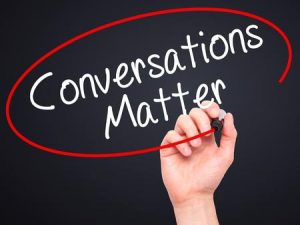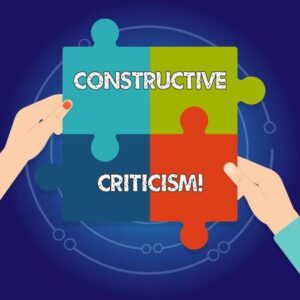Tag: Listening
Developing Your “Gut Instincts”
How many times have you had a feeling in your “gut” that you were right about something or that something just wasn’t right? Did you follow it?
Intuition is sometimes called our “higher wisdom” or “intelligence of the heart”. It is knowledge or cognition gained without any rational, intellectual thought or effort.
Harvard business professor, Daniel Isenberg studied a group of leaders in major corporations for the use of intuition on the job. He spent days with them observing as they worked, interviewing them and having them perform various exercises designed to figure out what made them successful.
Isenberg discovered five different ways successful leaders use intuition:
Cooling Hot Buttons
Conflict pushes our emotions in many directions.
“Anger” is, after all, just one letter away from “Danger”. Leaders, who are in control and professional, often reflect on their responses before, during and after conflict.
The phrases below represent comments from coaching sessions in which people lost control and used destructive behaviors during conflict at work.
“I was so mad. I was seeing red.”
“I couldn’t take it anymore and blew up.”
“S/he really knows which buttons to push.”
“I went over the edge with anger and just lost it.”
The Conflict Dynamics Profile (CDP) is a tool that gauges hot buttons, as well as, constructive and destructive responses to conflict.
Strategies for Building Communication During Conflict
“I’m sorry, if you were right, I’d agree with you.”
Robin Williams
One of the first steps toward resolving conflicts is to understand that each of us has power over whether or not a conflict becomes negative. Transforming how we think about conflict can help harness the direction and flow that conflict brings.
Carefully handled conflict can help us to shift from debate to dialogue, being at odds to being in a partnership.
In debate (e.g. position based approaches), we declare our positions.
In dialogue (e.g. interest based approaches), we recognize and satisfy interests with both parties looking for common ground.
Continue reading “Strategies for Building Communication During Conflict”
What is Unintentional Intolerance?
Today’s workplace has a broad range of religious and political beliefs, genders, cultures, generations, races and lifestyles. These powerful aspects of others and ourselves provide daily communication and connection challenges.
Without thinking we could easily appear intolerant and insulting. Our actions can be “lost in translation” without self-awareness and sensitivity.
In the article, “Can You Speak the Language of Business with other Cultures?”, by Elisabete Miranda, the author outlines ways to support diversity and educationally grow in understanding others.
Suggested actions include:
The Quiet Side of Networking
Networking situations cause people to stress out over what should be said. But networking doesn’t mean doing all of the talking.
The world abounds with free and interesting information if you just take the time to be seriously curious and listen. Writer Fran Lebowitz says, “The opposite of talking isn’t listening. The opposite of talking is waiting.”
Unfortunately, many people act that way in conversations—impatiently waiting instead of listening. The goal of listening during networking is to get your partner to elaborate. This enables you to learn more and work to build a relationship.
Remember When your Boss was Older than You?
The workplace is truly a new place. In this place the boss isn’t always the guy with the gray hair anymore.
As baby boomers age and younger, technology savvy workers move up the chain of command, generations are beginning to experience a very different workplace dynamic.
Now, those leading the company teams may be much younger than the workers they are asked to lead. This, of course, can lead to challenges and conflict.
Continue reading “Remember When your Boss was Older than You?”
Give the Gift of Listening
Listening enables us as leaders and mangers to value our employees. It helps people get the most out of meetings and conversations. True listening promotes cooperation. It assumes the other person has worth, dignity and something to offer.
Some benefits to increasing your listening include: building cohesive teams of people, developing individuals to be better contributors, making solid decisions, knowing how to connect with others and creating an atmosphere of reduced stress. When people reflect on their best boss a frequent response is that the person was a great listener. Listening is a gift that aids us in both personal and professional growth.



